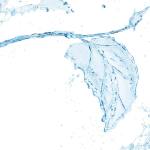Does water have taste?
Recently I get this question a lot when talking water to my friends and colleagues. My answer, out of my gut, has been so far:
Yes, of course!
Over the past week I realized, that the fundamental challenge is not if water has taste, but how to describe and make people aware of the fine differences when tasting water.
As a sommelier, tasting is THE essential skill together with describing tastes and making people excited about that description.
Tasting is a journey. It is the sum of our experiences we had in our life with different types of foods and liquids. Tasting is linked to other senses: smell, visual and sound experiences.
The taste map
We all taste different, we have millions of taste buds in our mouth, each of them positioned uniquely to give feedback on a taste we experience. Sometimes during our life we hear about the taste map, different regions on our tongue that taste different things. That map turns out to be wrong, call it fake news. Each taste bud can taste any taste type, although with a different intensity. That makes us unique as humans. We all have a different taste perception of the exact same food based on this unique profile. That makes the job of a sommelier difficult, finding something that tastes good and appeals to a lot of people, even we are all different and have different taste perceptions.

The taste types
There are five different taste types: sweet, salty, bitter, sour, umami (savory). Some literature calls for other tastes but these are the 5 most agreed on categories. As we start our life (and most likely we start with our mothers milk), we start to experience different tastes in the liquids and foods we are given. Some of these tastes we will start to like, some of them we will start to dislike. It is the collection of these experiences that shape our taste profile and our perception of tastes. We start to develop preferences and favorites build on these childhood memories and experiences in our life journey.

Taste of water
Most of us do not think of taste when it comes to water. I even heard now that some people use it to ‘neutralize’ the taste before tasting something else. As a sommelier I spend the past years to examine this aspect and bring more inspiration to the taste of water and tea.
Fine Water contains minerals, their level is measured by TDS (Total Dissolved Solids) and that number is printed on the bottle. TDS will tell you the level of minerals and you normally find the composition of minerals on the label of the water bottle. Lots of sodium and your water will taste salty, other minerals will tilt the balance towards bitter, sweet or sour. Bubbles in water will add to this complexity and will let you experience the taste of water in a different way. Did you know that salt water in the ocean has a TDS of 35,000 ? Your average mineral water in the supermarket will have a TDS of 250 – although you should not drink salty sea water as it will be damaging to your body.

Bottle check
So next time you pick up a bottle of water in the supermarket, look at the label and try to find the TDS number on the label. That will give you an indication of what to expect in terms of flavor complexity. In the next couple blogs I will try to unpack this flavor profiles with some exciting examples of different waters.
Stay Thirsty!



















 Oolong tea called ‘Oriental Beauty’ (more specifically Dongfang Meiren or Baihao) and you will get a wonderful fresh tea.
Oolong tea called ‘Oriental Beauty’ (more specifically Dongfang Meiren or Baihao) and you will get a wonderful fresh tea.

 I hope these tips inspire you to try high quality loose leaf tea, even from the supermarket and try to make your own ice tea. Your taste buds and your guests will thank you.
I hope these tips inspire you to try high quality loose leaf tea, even from the supermarket and try to make your own ice tea. Your taste buds and your guests will thank you.



